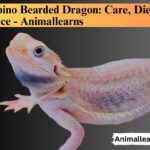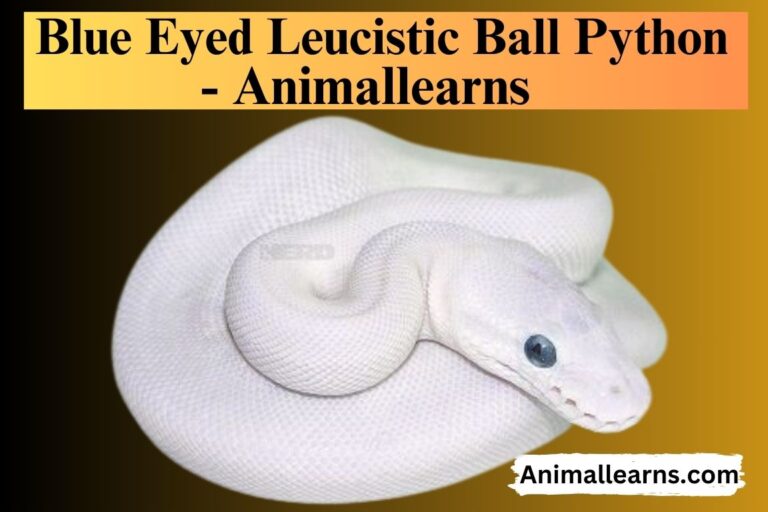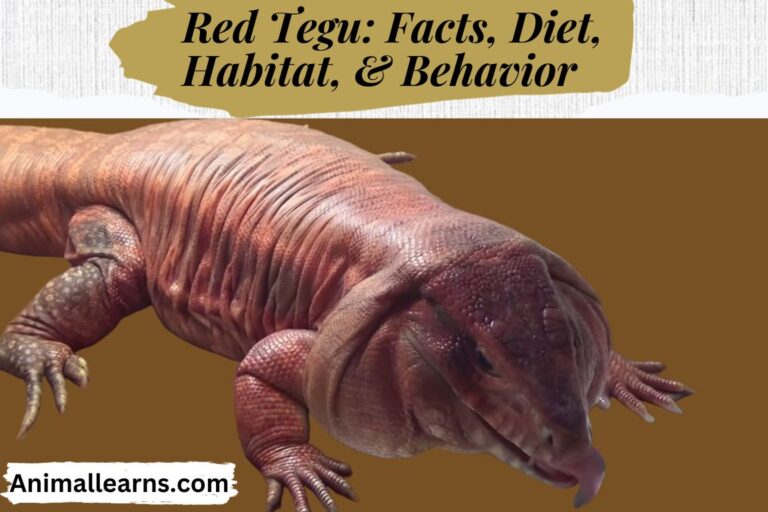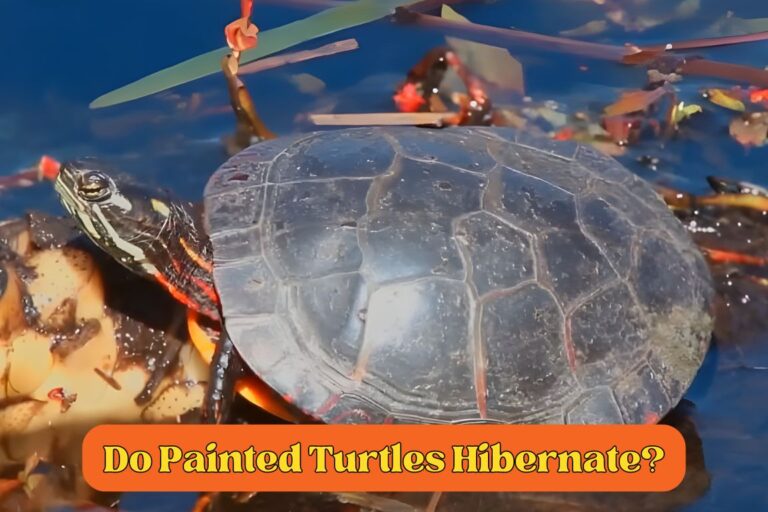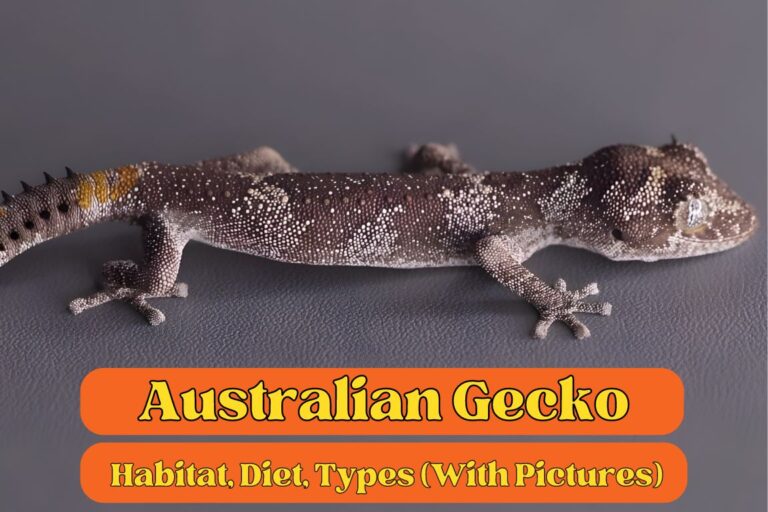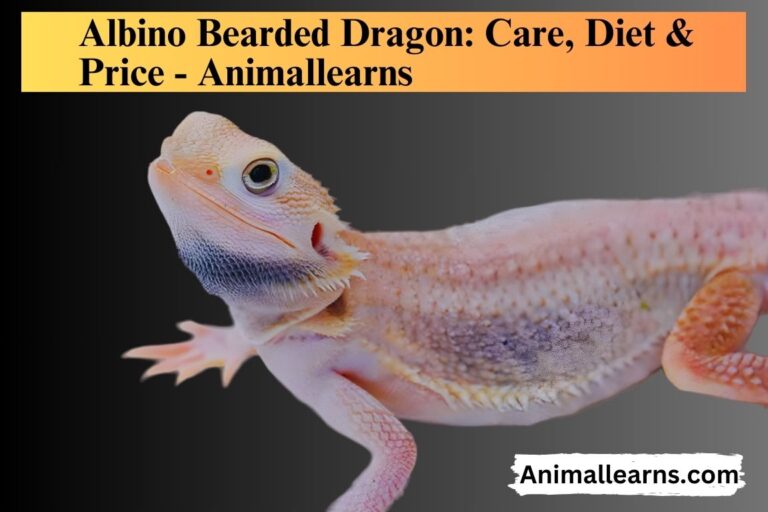Red Bearded Dragon: Facts, Health, Pictures & Care Guide
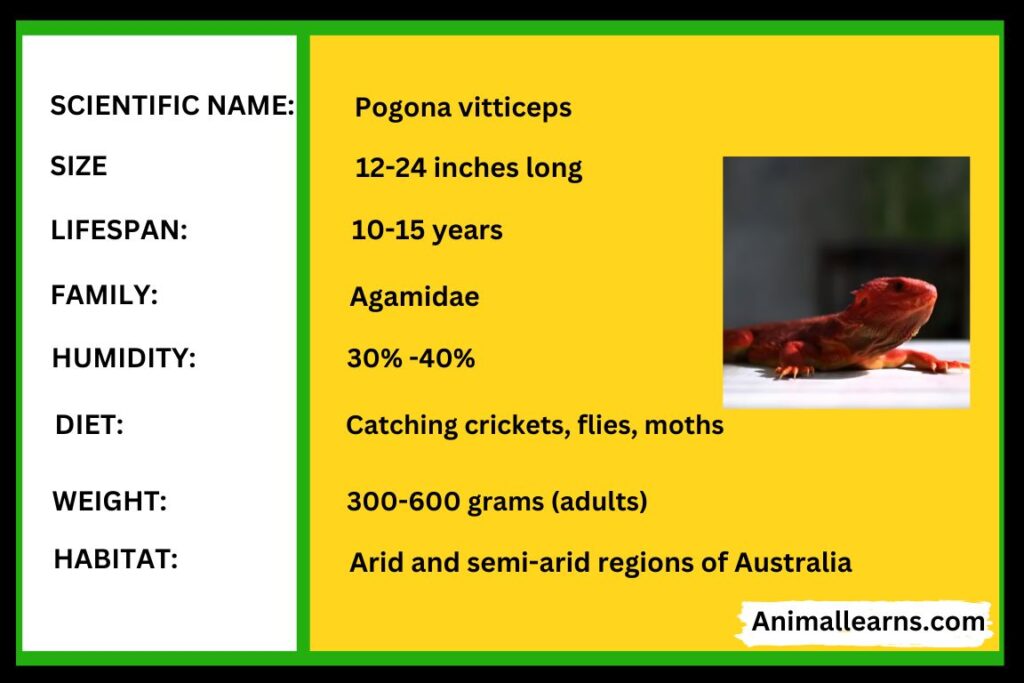
A stunning variation of the common bearded dragon is the red bearded dragon. It is brilliant red in color, as the name suggests, yet there are variations in the shade of red. Like other bearded dragons, this one is thought to be a rewarding pet.
Even for novices, bearded dragons are generally regarded as excellent pets, although they do have certain demanding needs. For instance, before feeding, feeder insects must be gut-loaded or powdered.
Appearance
Contents
- 1 Appearance
- 2 Lifespan
- 3 Breeding
- 4 Do Red Bearded Dragons Make Good Pets?
- 5 Are Red Bearded Dragons Friendly?
- 6 How to Take Care of Red-Bearded Dragon
- 7 Feeding Your Red-Bearded Dragon
- 8 Keeping Your Red Bearded Dragon Healthy
- 9 Shedding: What to Expect
- 10 Common Health Issues
- 11 How Much Do Red Bearded Dragons Cost?
- 12 Care Guide Summary
- 13 Conclusion
- 14 FAQs
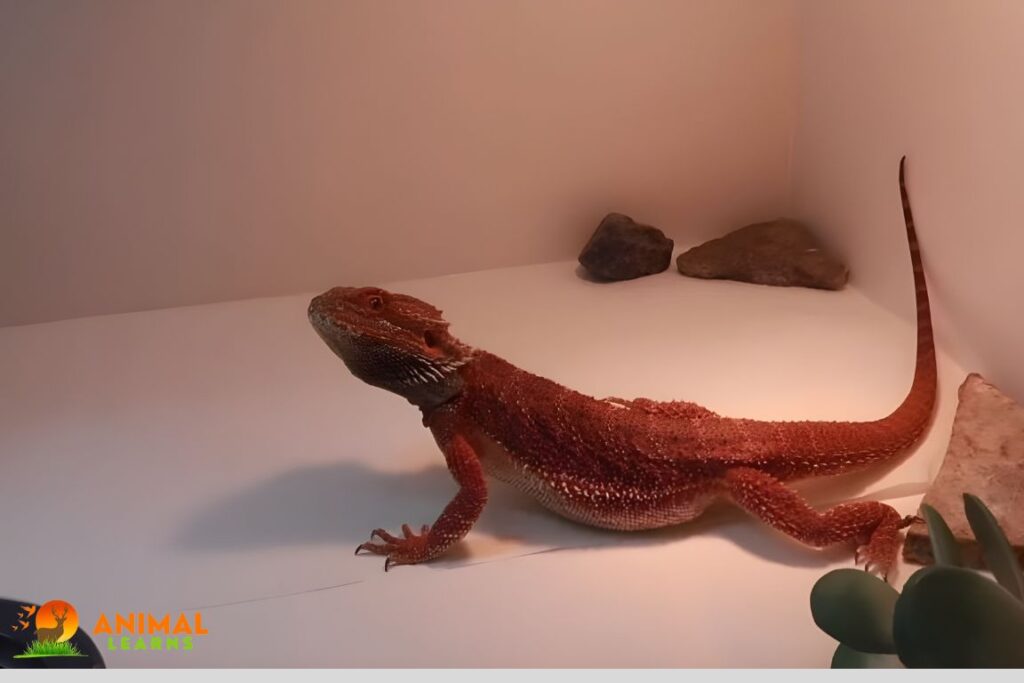
You won’t find one of these gorgeous creatures anywhere in the natural world since red bearded dragons are a completely artificial variation of bearded dragons.
These reptiles can exhibit a variety of red colors, however, the most sought-after variations of the red-bearded dragon morph are frequently solid red and ruby red.
All red bearded dragons have the potential to command a premium price tag, even if they are not among the most sought-after variations of the red morph.
Apart from their coloring, these creatures have the same build as other bearded dragons. Their “beard,” which is spiked and may inflate out when they’re anxious or trying to woo a mate, is also spiky.
In extreme circumstances, the beard may even become black. A bearded dragon is a great choice for a tiny pet if you’re searching for something that can grow up to two feet in length.
Lifespan
In captivity, bearded dragons are predicted to live for 10 to 15 years. The time you spend with your bearded friend can only be extended with a healthy lifestyle and a clean tank.
Breeding
Normally, the female begins to deposit eggs four to six weeks following a successful breeding attempt. The male may be rather aggressive, so once they have mated, you should separate the two.
Provide a “lay box,” which is just a plastic container with dirt inside of it. Because beardies are not especially maternal, they may disregard the eggs as soon as they are deposited, thus the eggs will need to be removed and incubated.
Do Red Bearded Dragons Make Good Pets?
Indeed! The red bearded dragon, like most bearded dragon morphs, may make a wonderful pet. Because socialized bearded dragons are frequently tolerant of being held by people, these reptiles are a wonderful choice for someone looking for a pet they can handle.
Some individuals can even walk these inquisitive animals on a designated leash! Bearded dragons are wonderful pets, but they require complicated care.
If someone wants to bring one home, they must be well informed of the care requirements, which include setting up a suitable cage and feeding the lizard according to its age.
A red-bearded dragon may live up to ten years as a social companion with the right care.
Are Red Bearded Dragons Friendly?
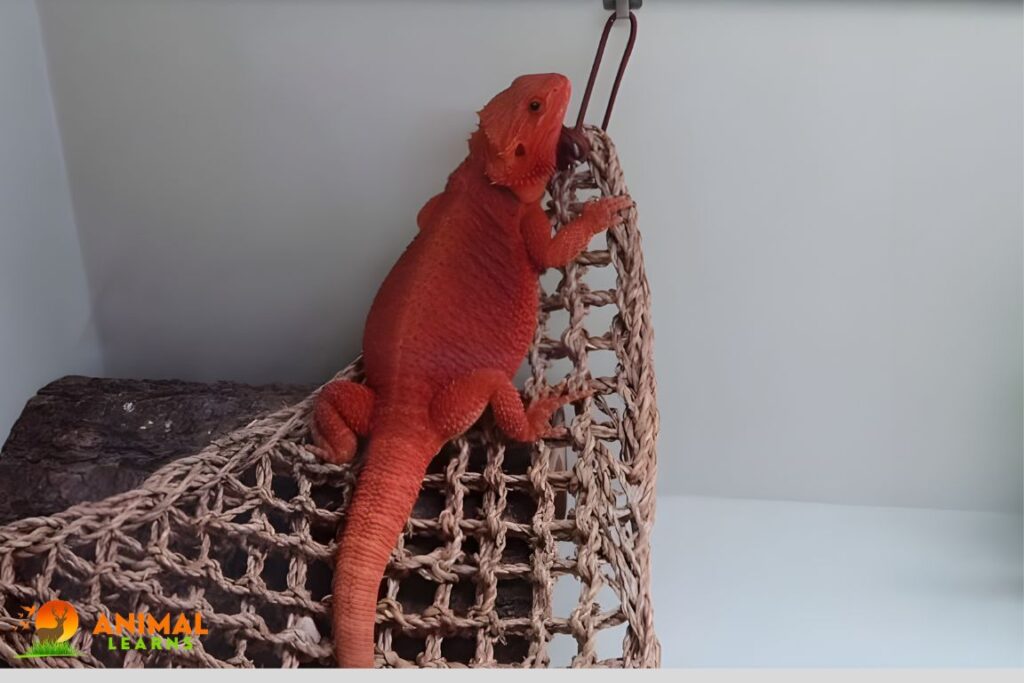
Red bearded dragons are just as amiable as other bearded dragon variants. It’s crucial to socialize your pet to human handling if you want to make sure they are manageable.
If your bearded dragon is not handled a lot while it is young, it might not be as amiable.
How to Take Care of Red-Bearded Dragon
| Tank Recommendations | |
| Tank Type | 55-gallon glass vivarium |
| Lighting | UVB fluorescent light |
| Heating | Ceramic heater, mercury bulb, basking lamp |
| Best Substrate | Washed play sand (adults), reptile carpets (juveniles) |
Habitat, Tank Conditions & Setup
A bearded dragon’s house is the most crucial component of providing them with a happy and healthy life. To make sure they have all they need, carefully go over each area below.
Tank
A 55-gallon tank is the minimum size needed for an adult bearded dragon, while a larger tank with more room is preferable. Since beardies naturally spend some time in trees, creating a similar environment will provide them with a more satisfying and pleasurable living space.
Rocks, branches, and logs give some height. Additionally, a half-log may be used as a hide, which is a crucial component of a beardie’s tank decor.
Spot cleans the tank each day to get rid of garbage and dead insects. You should only need to perform a thorough cleaning of the tank once a month if you perform spot cleaning well.
A complete clean entails clearing everything out, sanitizing, and adding new substrate.
Lighting
Beardies require frequent UVB sun exposure. Make sure your beardie can reach the light source, which should be 12 inches away, and provide specific fluorescent lighting with the appropriate UV spectrum. The natural environment of your beardie is replicated with a 12-hour day/night cycle.
Heating (Temperature & Humidity)
Assemble a temperature gradient in the tank such that the chilly end is 80ºF and the basking end is as hot as 105ºF.
At night, the temperature might dip below 70ºF. Mercury bulbs, incandescent lights, and ceramic heaters can all produce heat. It’s important to use thermometers to make sure the temperature is consistently at the ideal level.
Maintaining a humidity level of between 30% and 40% is recommended. It’s easy to raise humidity, but it might be difficult to lower it if you live in a humid climate. You can precisely keep an eye on the humidity when you use a hydrometer.
Substrate
Finding a substrate that mimics the dry environment they inhabit in the wild is essential, but it also has to be safe to eat with insects and other food sources.
While silica sand should be avoided, digging is permitted in washed play sand. Paper towels and reptile carpets are more alternatives.
It is best to completely avoid using sand when building a habitat for young animals.
Feeding Your Red-Bearded Dragon
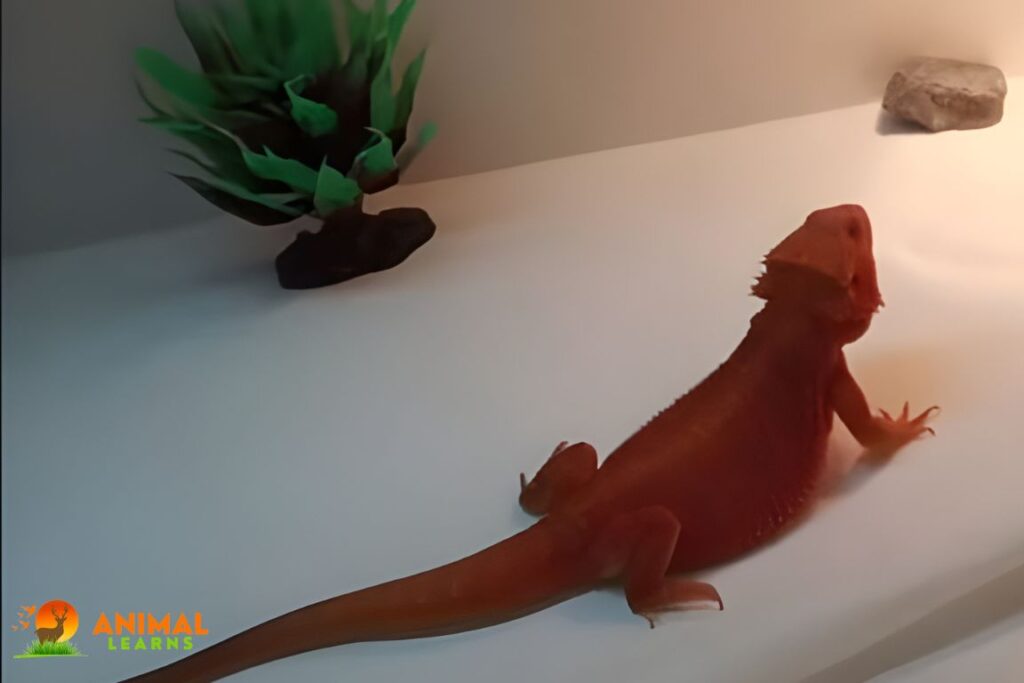
| Diet Summary | |
| Insects | 75% (juvenile) 25% (adult) |
| Fruits | 10% (juvenile) 25% (adult) |
| Vegetables | 15% (juvenile) 50% (adult) |
| Meat | 0% |
| Supplements Required | Calcium/Vitamin D3 |
An assortment of fruits, vegetables, and insects make up a bearded dragon’s diet, which can be confusing at first.
Particularly when you include the requirement for dust feeders and gut loading. But it’s not too hard to keep up if you get into the habit of eating right.
Adolescent bears require nourishment to support their rapid growth. Feed 25% plants and 75% insects. Insects are given to young hatchlings every fifteen minutes, and by the time they are two months old, they will still require three meals a day to obtain protein.
Adult beardies, or those who are 18 months of age or older, should eat once a day, with 25% of their meal coming from insects and 75% from plants. To keep your beardie interested in its meals, feed it a variety of insects and plants.
Keeping Your Red Bearded Dragon Healthy
Maintaining ideal habitat conditions is essential for your red bearded dragon’s happiness and health, as it is for the majority of reptiles.
Utilize a hydrometer and thermometer to track humidity and temperature and make necessary adjustments. In a similar vein, make sure the food you offer is nutrient-dense.
Shedding: What to Expect
When bearded dragons reach adulthood, they only shed a few times a year, as opposed to every few weeks as juveniles. They frequently lose their skin in portions rather than all at once, however, this is rare.
Common Health Issues
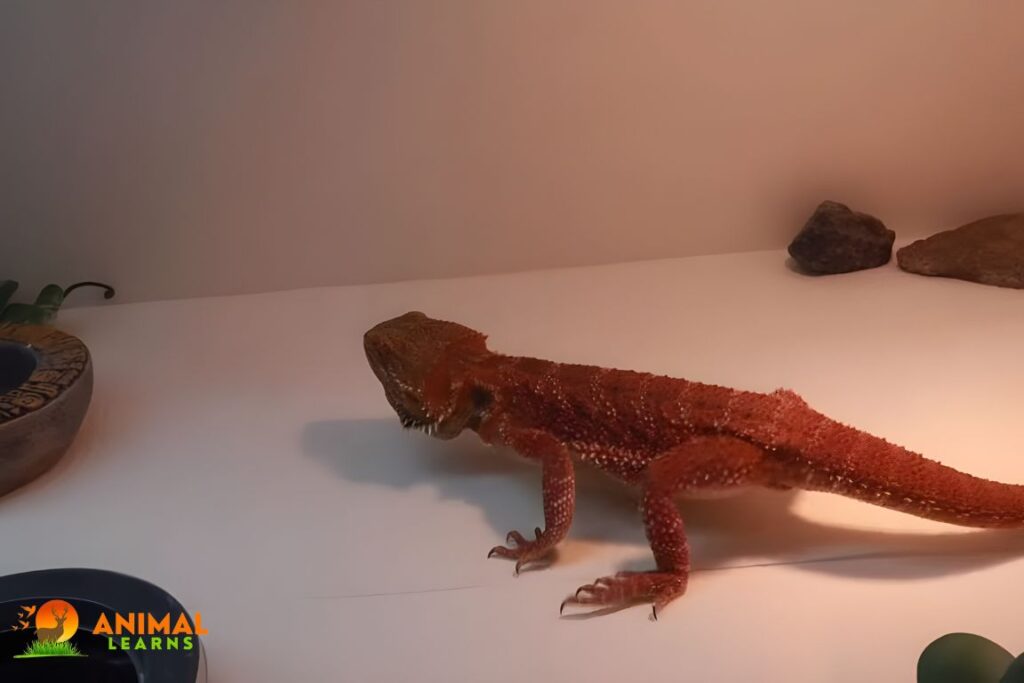
Metabolic Bone Disease: MBD is a prevalent condition affecting reptiles kept in captivity. An inappropriate diet, particularly one that is too rich in phosphorus or inadequate in calcium and/or vitamin D3, is the primary cause of this condition.
Inappropriate UV radiation exposure can also result in insufficient vitamin D3 production, which can induce MBD.
It can cause irreversible bone deformity, but with the right treatment, the disorder itself can be treated. When MBD is severe, it can be fatal.
Respiratory diseases: Respiratory infections, such as pneumonia, are brought on by bacteria, fungi, or parasites. Your beardie may sneeze and you may notice bubbles coming from their mouth and nose.
Parasites: The most prevalent parasite is pinworms, which are often discovered during a routine fecal screening for parasites. They may result in weight loss and diarrhea.
Infectious stomatitis: Gum swelling and thick mucus are symptoms of mouth rot, a bacterial illness.
How Much Do Red Bearded Dragons Cost?
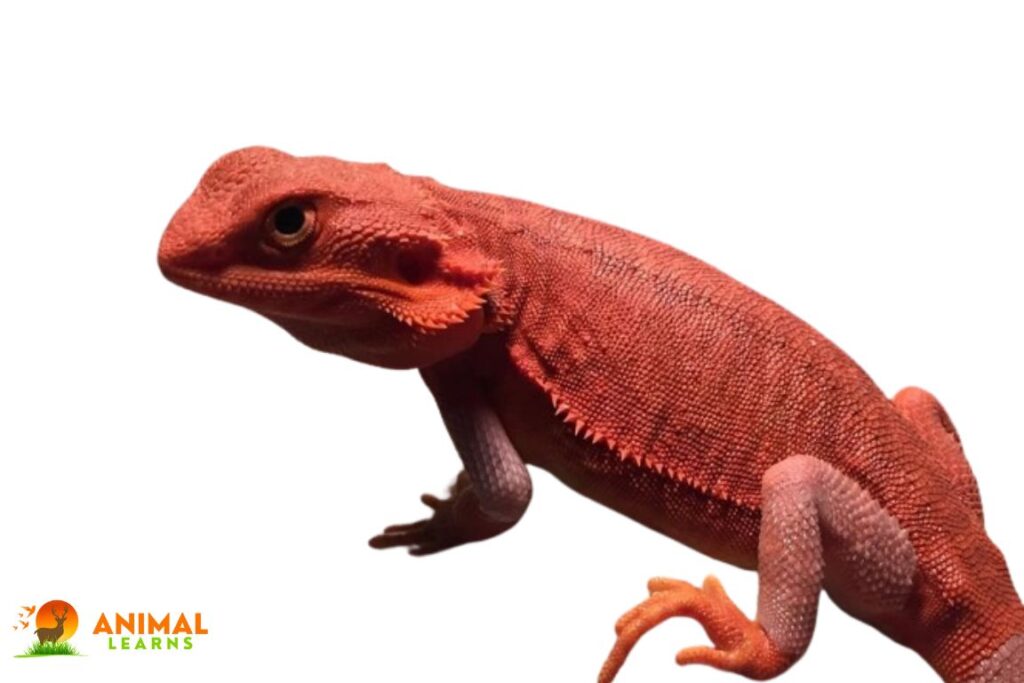
While bearded dragons are very common and a good morph may cost as low as $50, red bearded dragons are much rarer and a good red morph will cost you between $200 and $300. The price tag often linked with the beardie increases with the deeper the red.
Care Guide Summary
| Red Bearded Dragon Pros | Red Bearded Dragon Cons |
| Tolerant of handling | Requires socialization |
| Unique color | Specialized care needs |
| Straightforward diet | Can become ill with improper husbandry |
Conclusion
A beautiful variation of the amiable bearded dragon is the red bearded dragon. They require complicated care, just like other bearded dragons, despite their uniqueness. To guarantee the health and longevity of their pets, anybody bringing a red bearded dragon home has to be well-versed in correct care for these creatures.
FAQs
Are red-bearded dragons rare?
Not particularly! While not as common as some other color morphs, red bearded dragons are readily available through breeders and reptile shops.
Do red bearded dragons make good pets?
Absolutely! They’re known for their docile temperament, ease of care, and entertaining personalities. Just ensure you can provide proper housing, lighting, and diet.
Do red bearded dragons like to be held?
With proper socialization and handling from a young age, they can become quite comfortable being held. However, respect their boundaries and avoid forcing interaction if they seem stressed.
Can red bearded dragons eat fruit?
Yes, fruits can be an occasional treat in their diet! Offer them in moderation alongside veggies and insects for a balanced nutritional intake.
Are bearded dragons harmless?
Bearded dragons are generally gentle creatures and pose no threat to humans. However, they can bite if startled or feel threatened, so handle them with care.
What is the rarest color of bearded dragon?
The rarest morph is arguably the lavender albino, characterized by a pale purple hue and distinctive red eyes. These beauties are highly sought-after and can fetch a hefty price tag.



